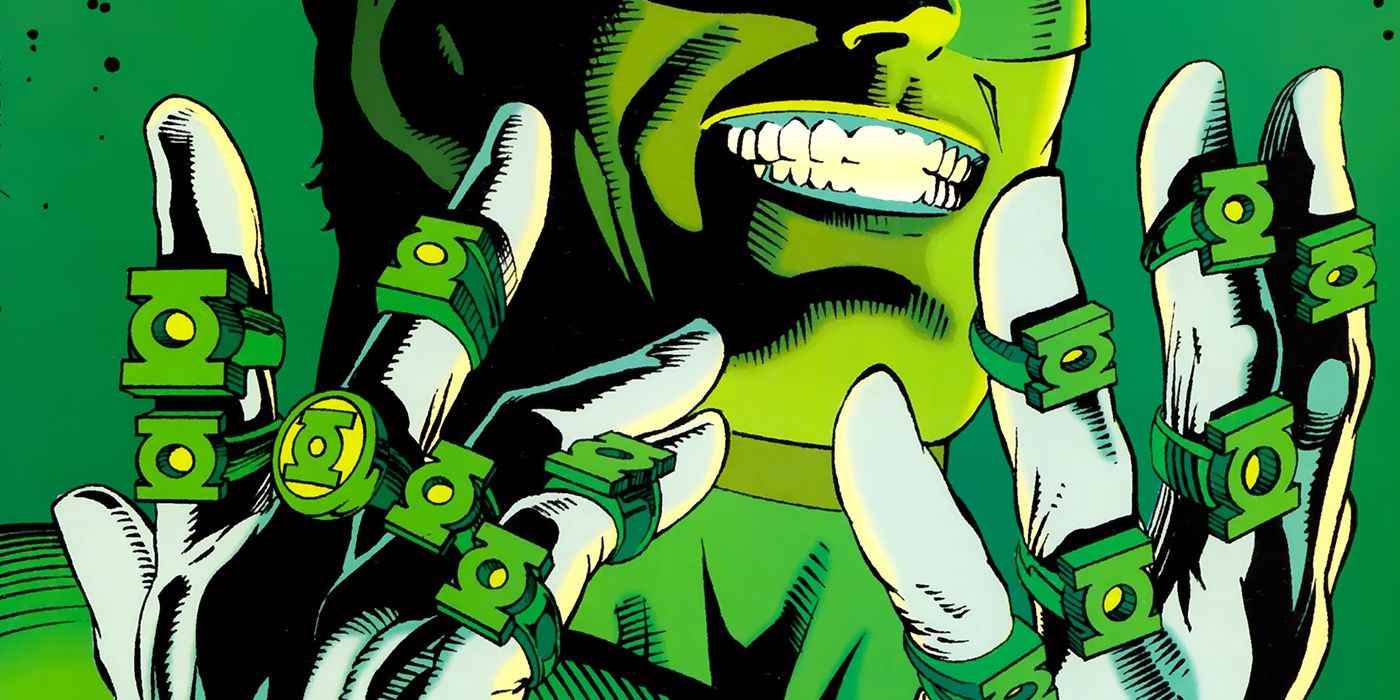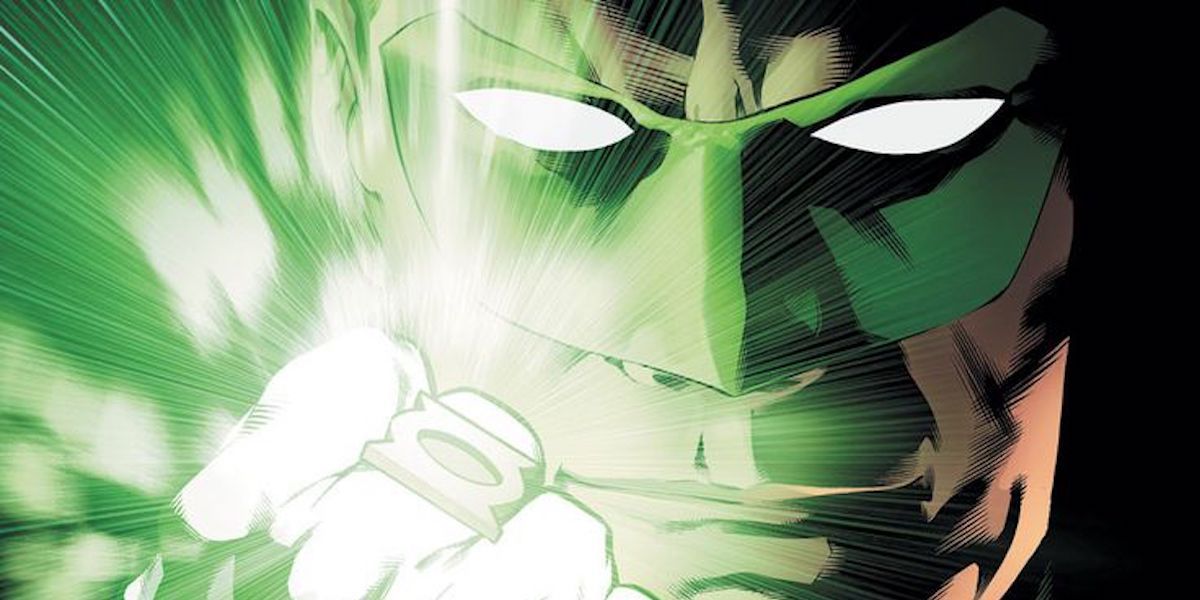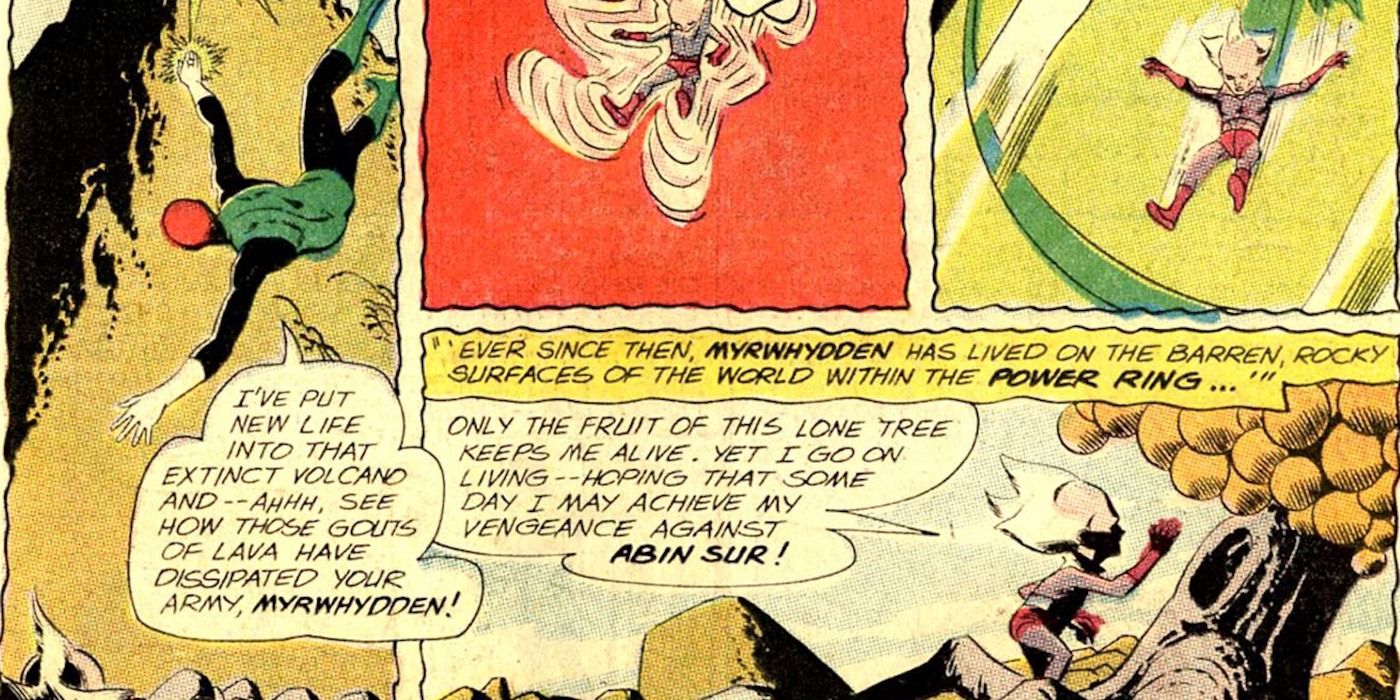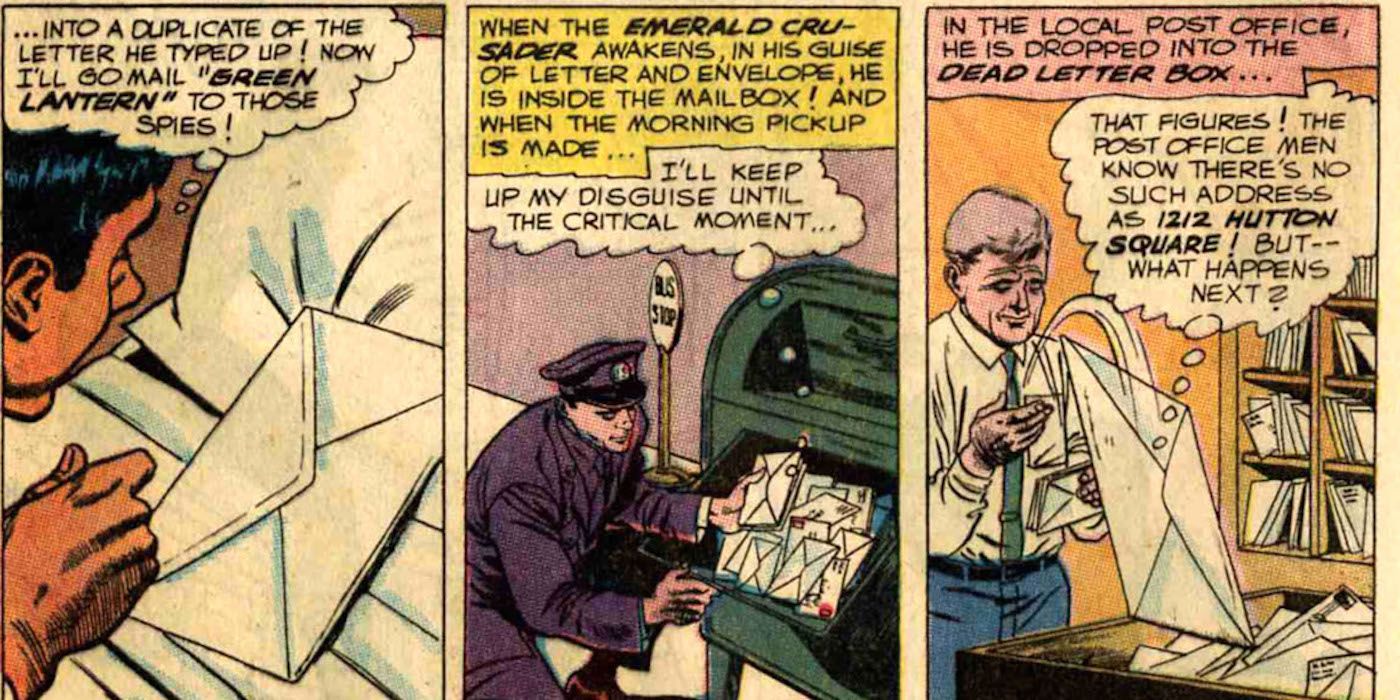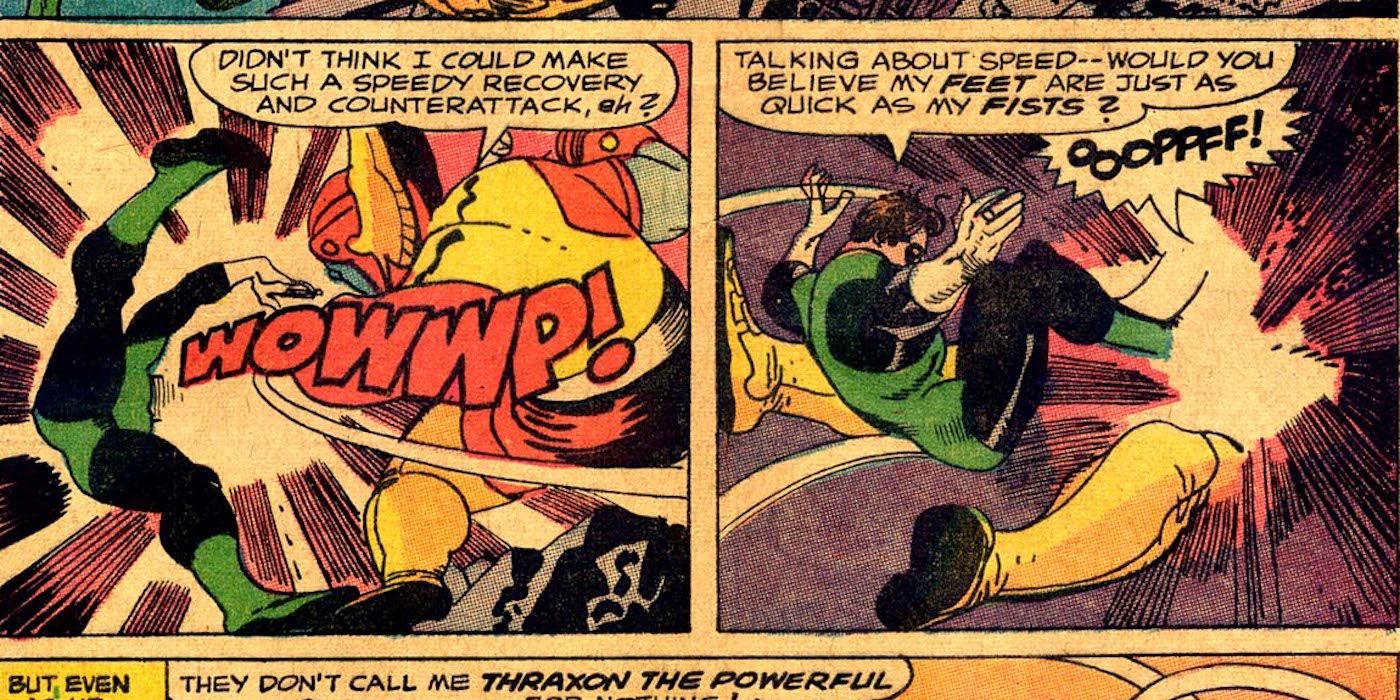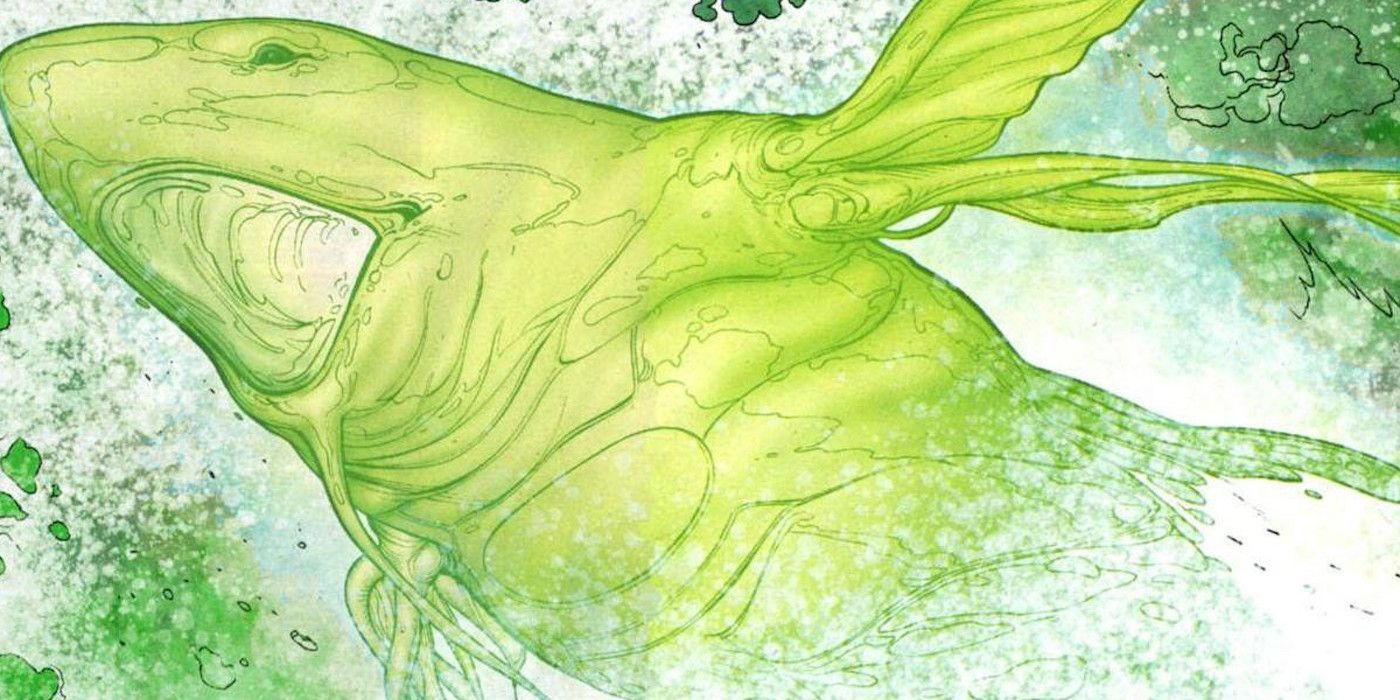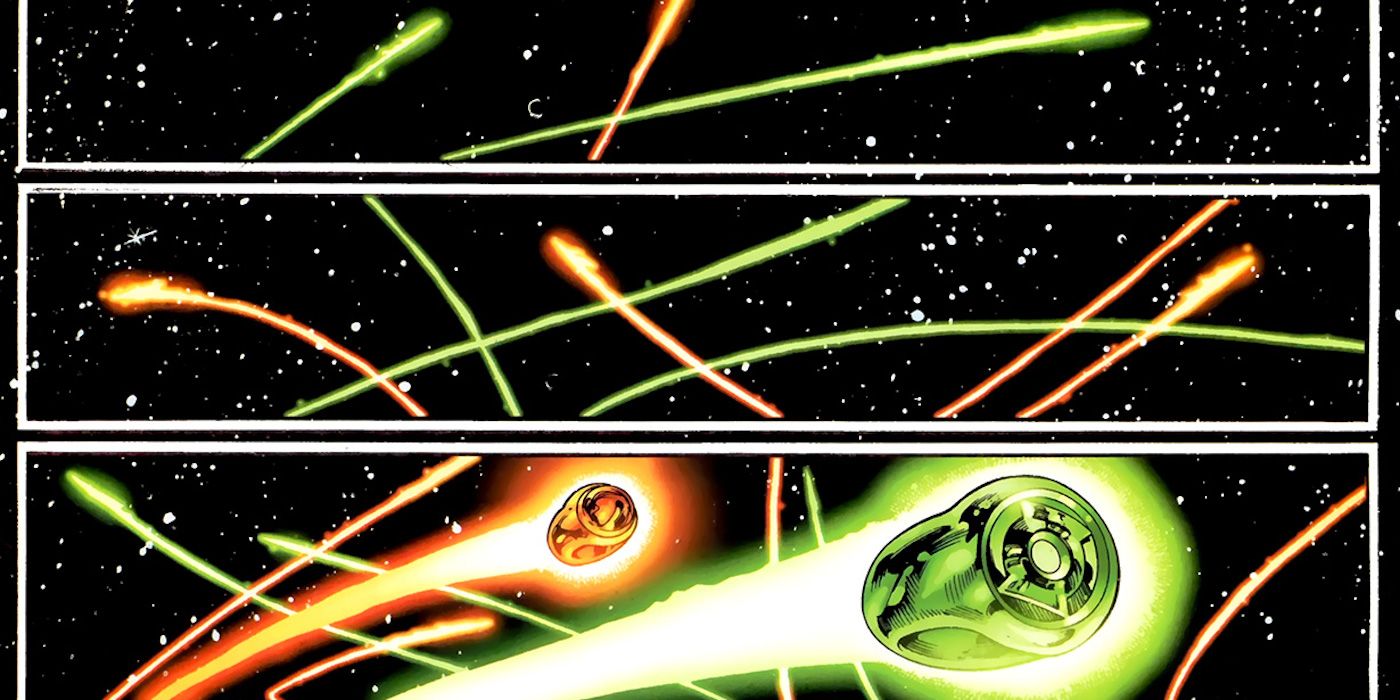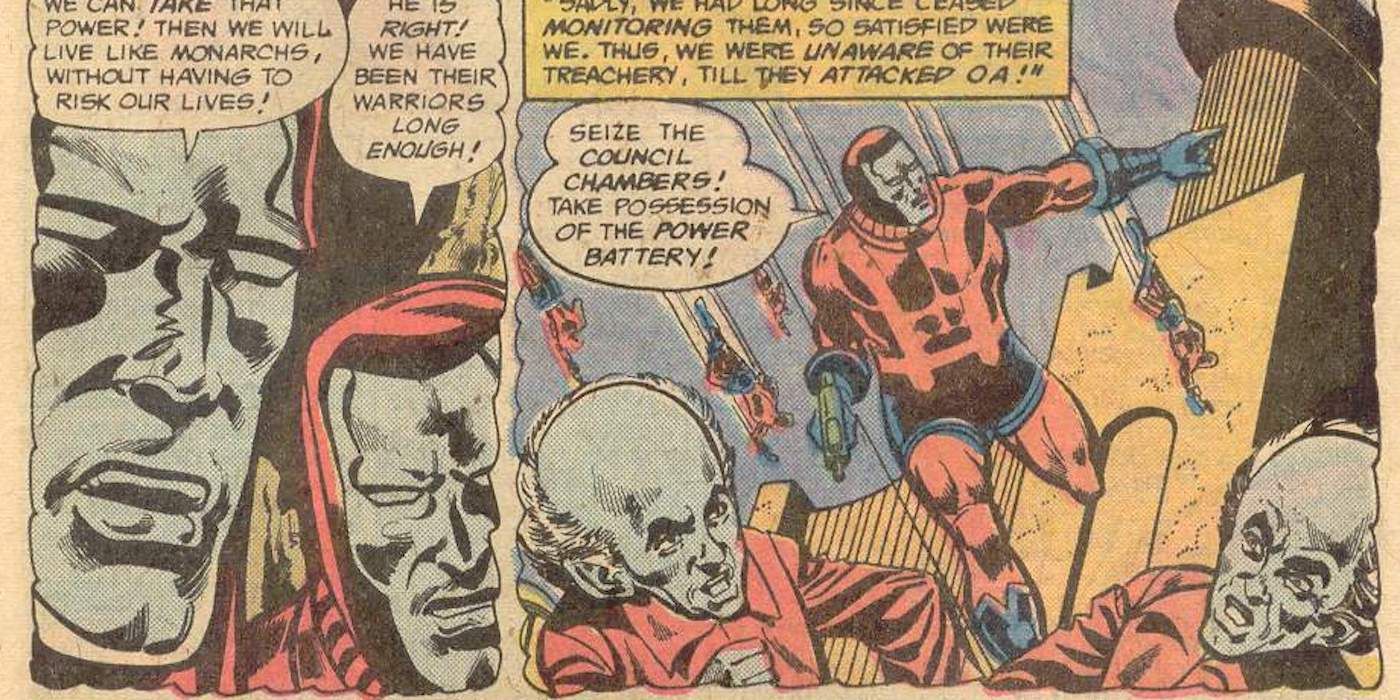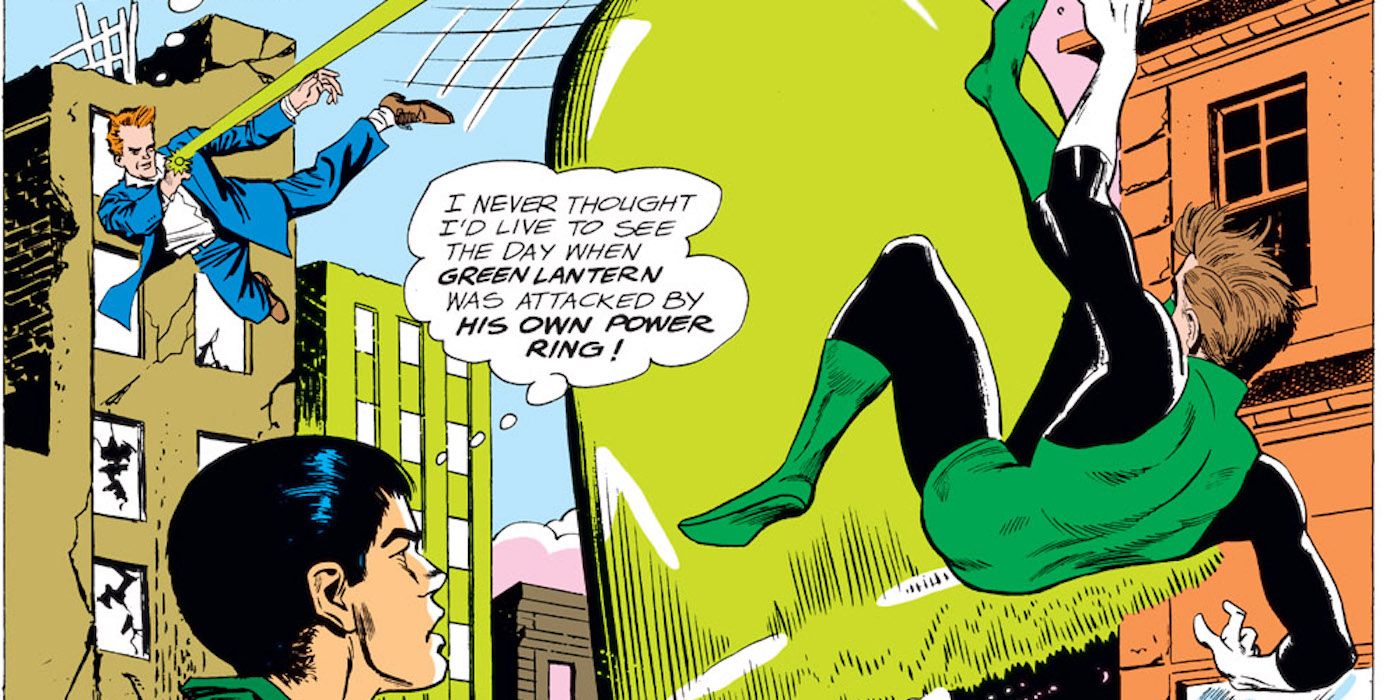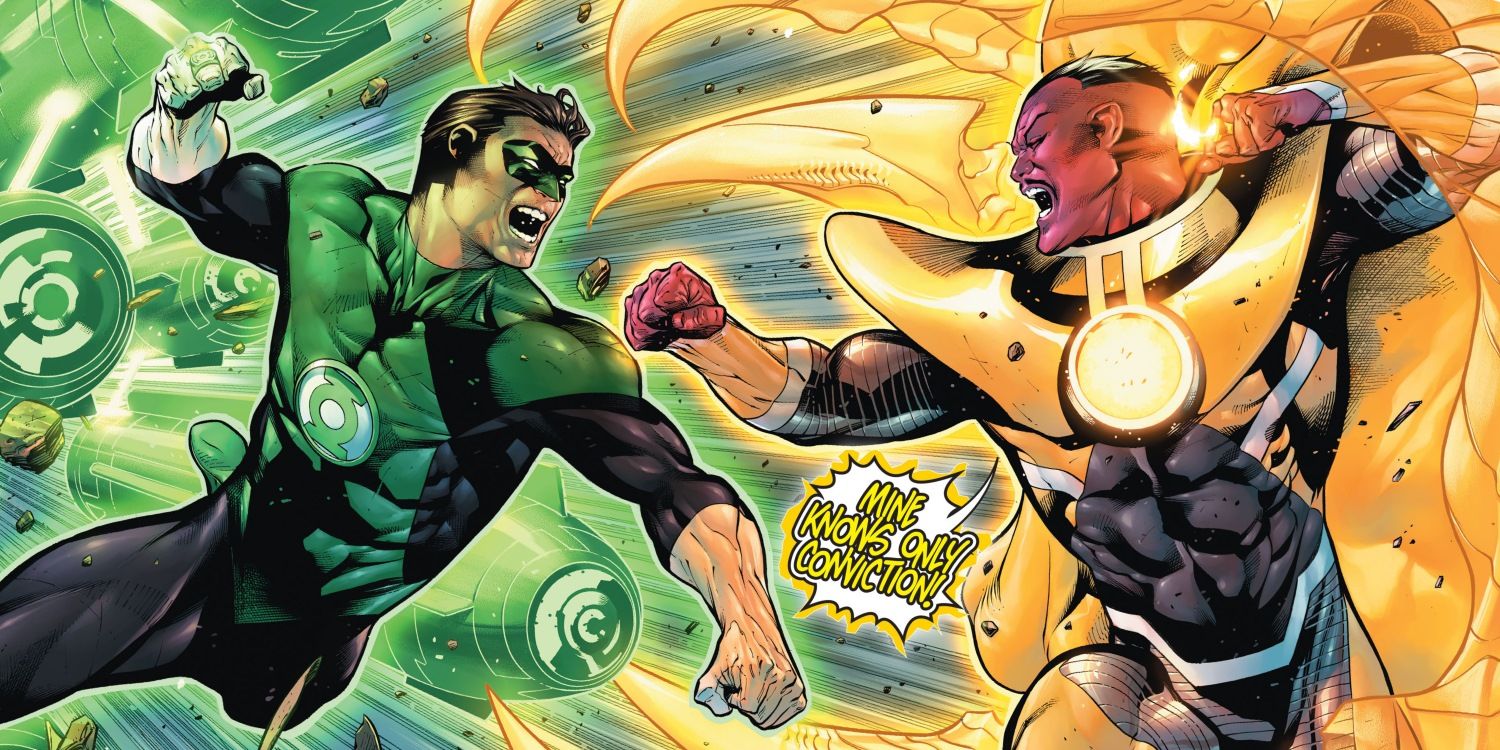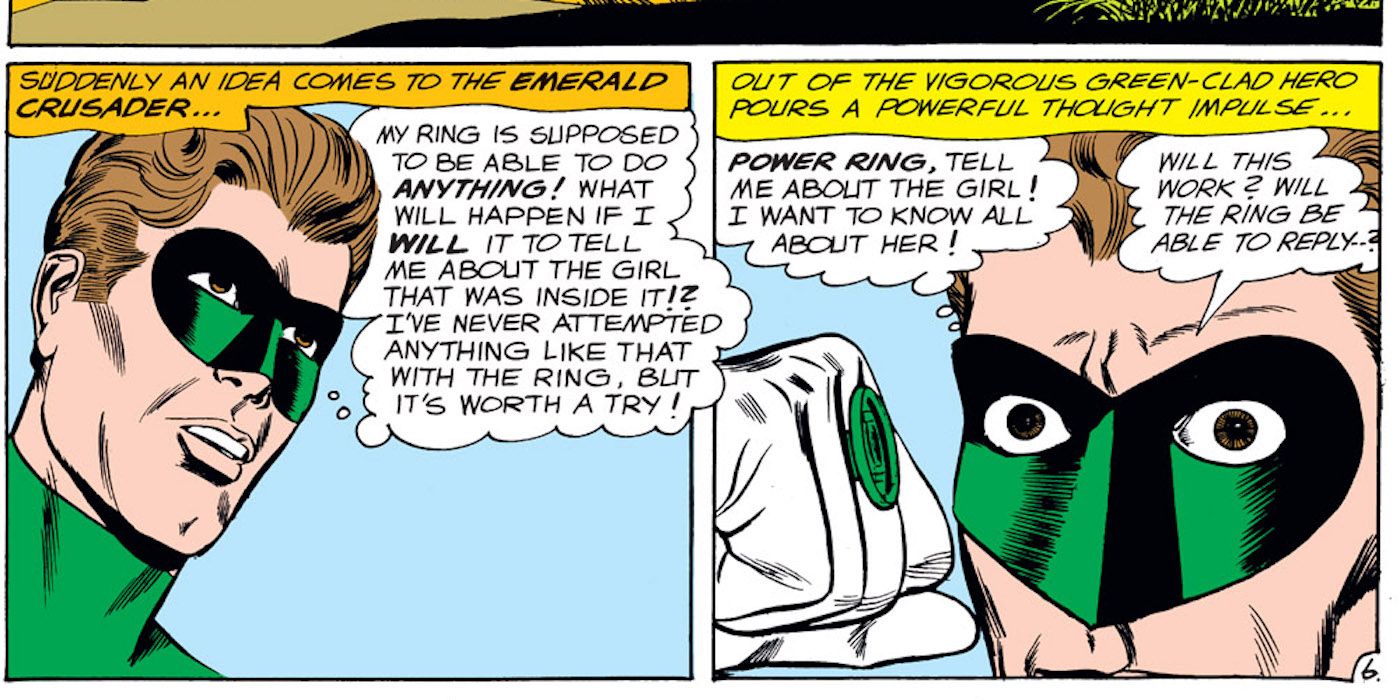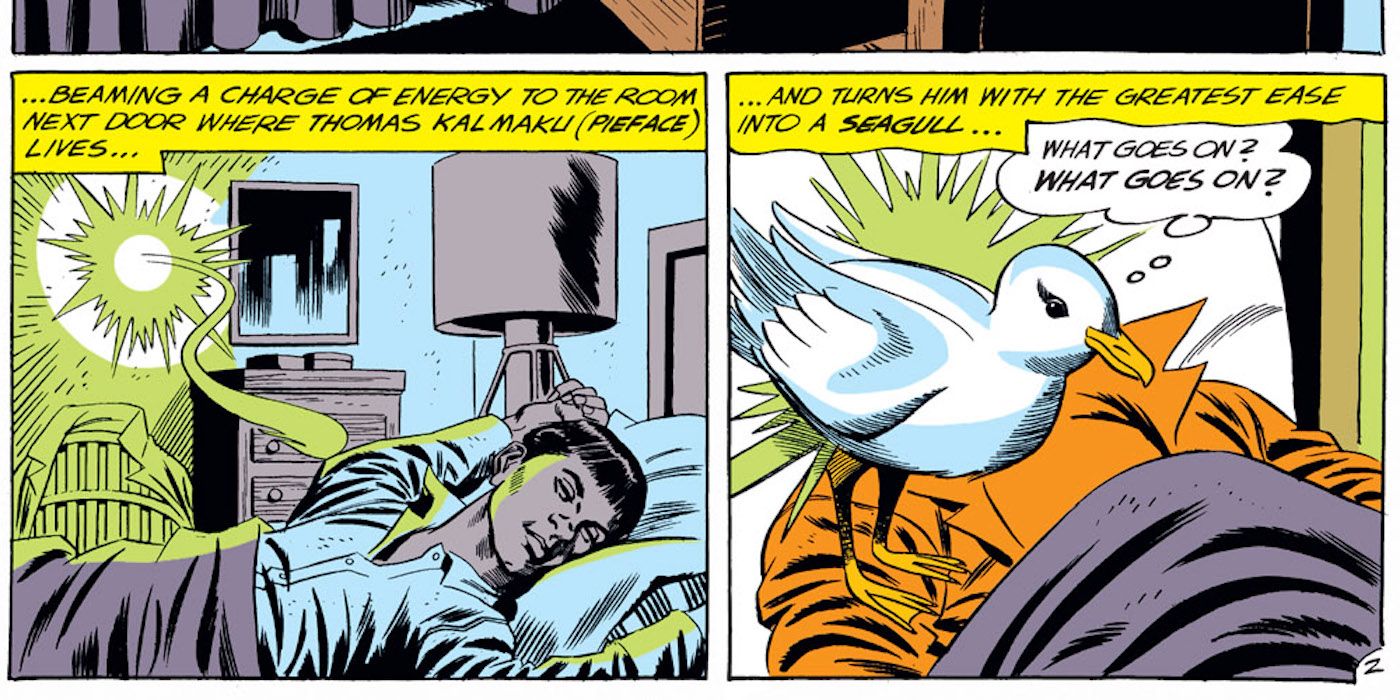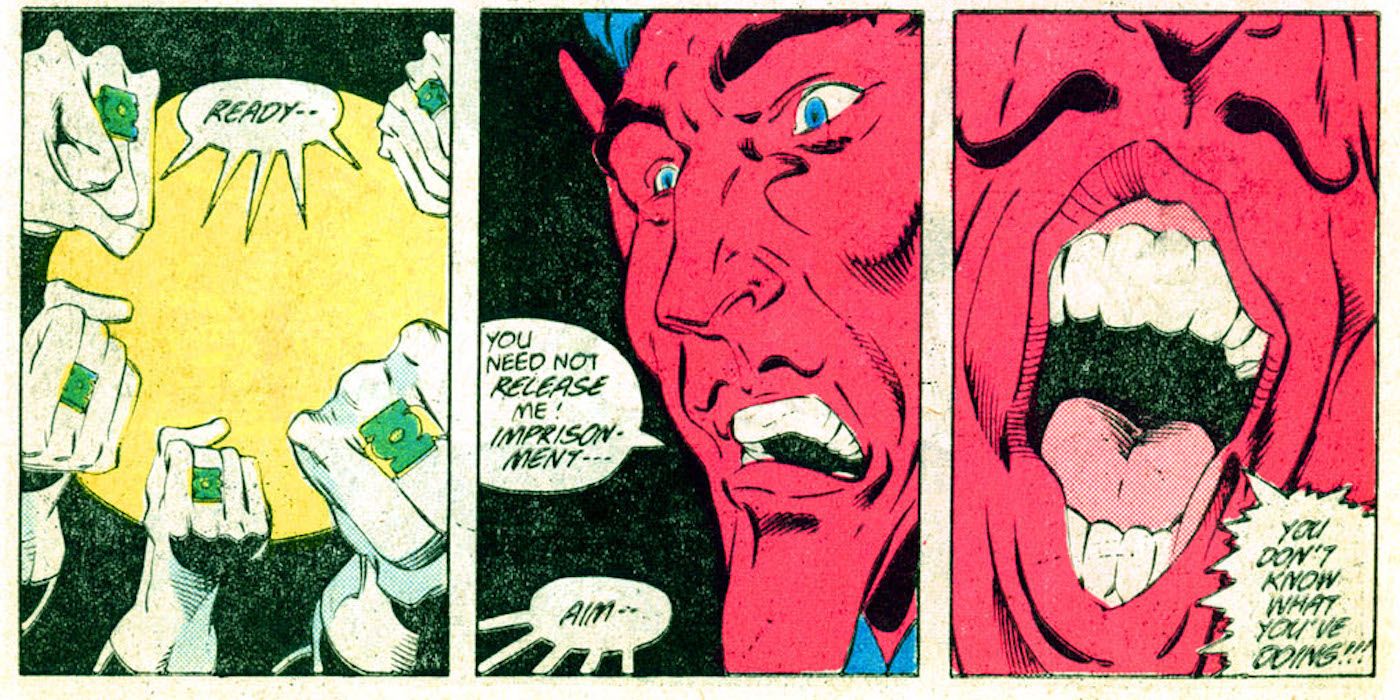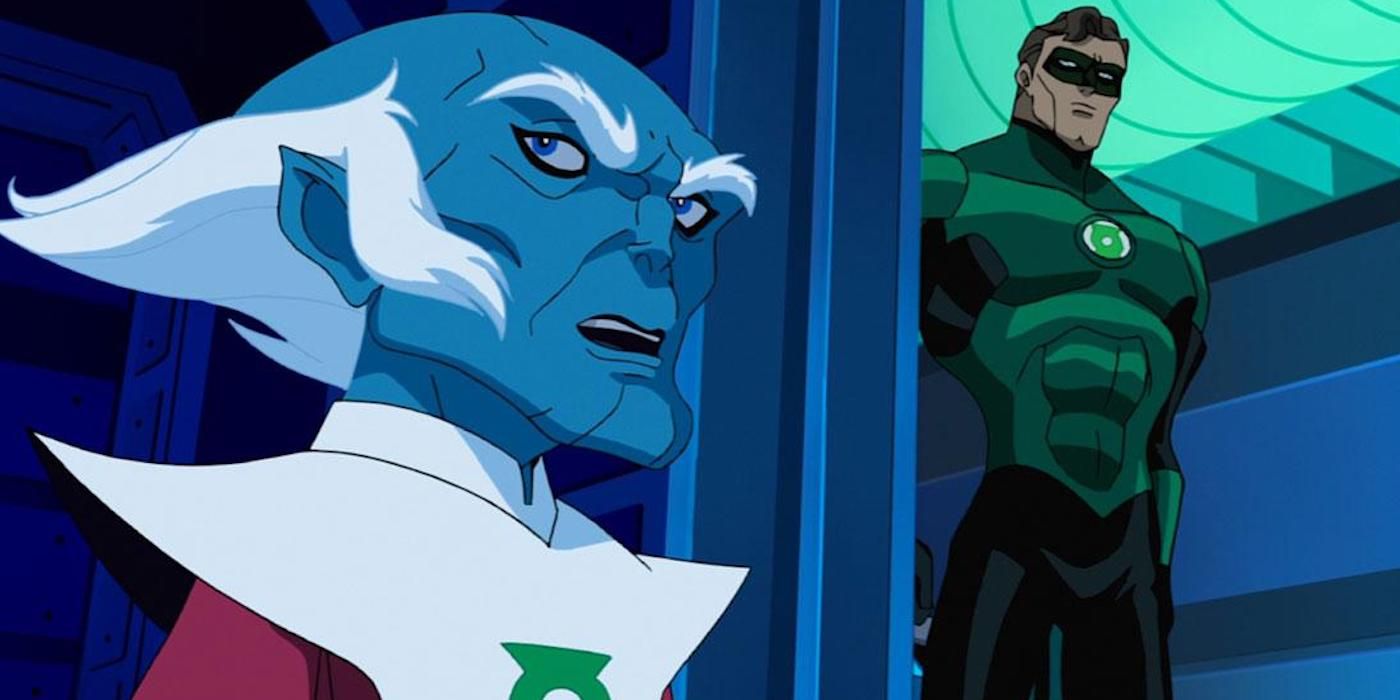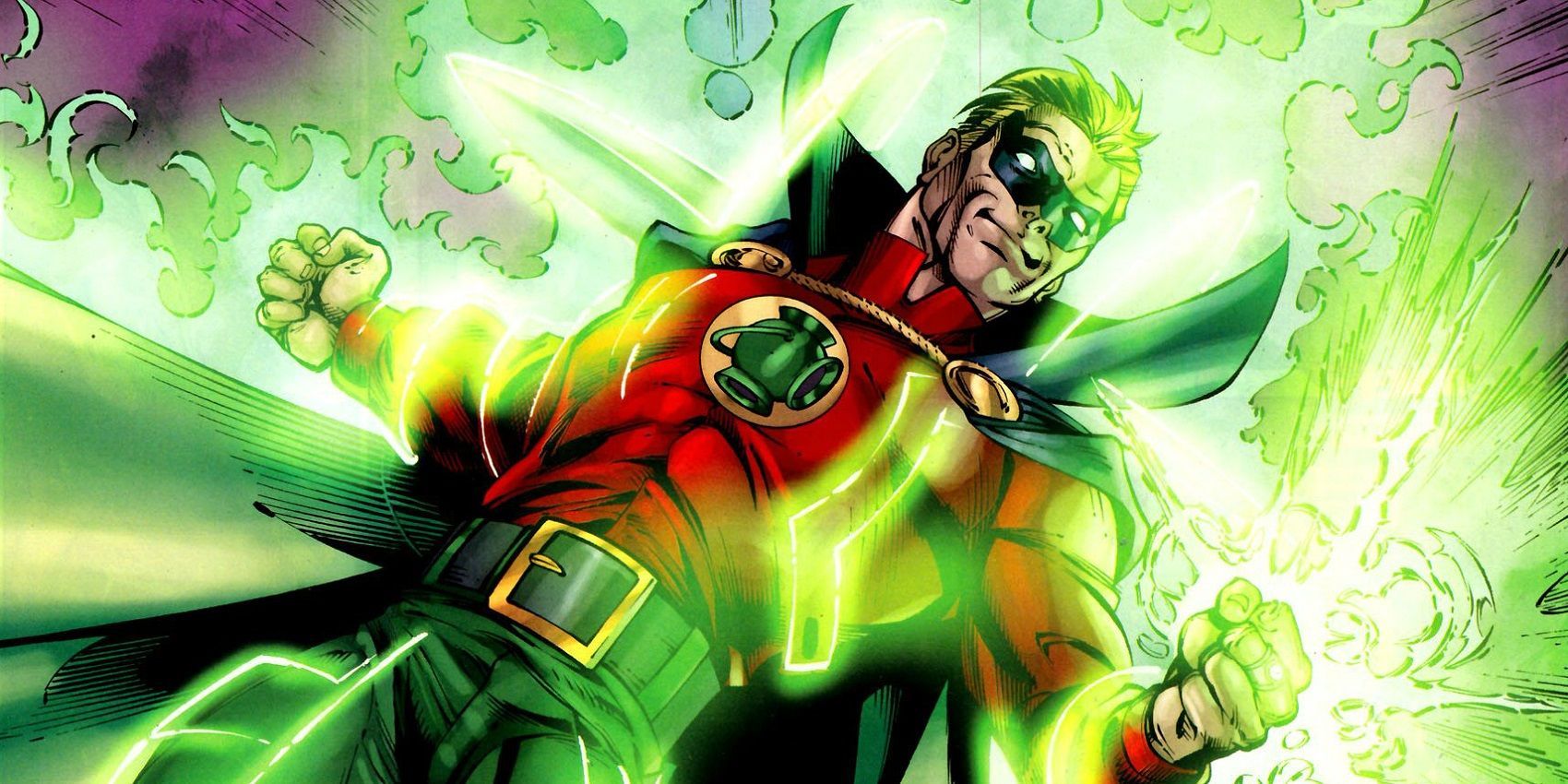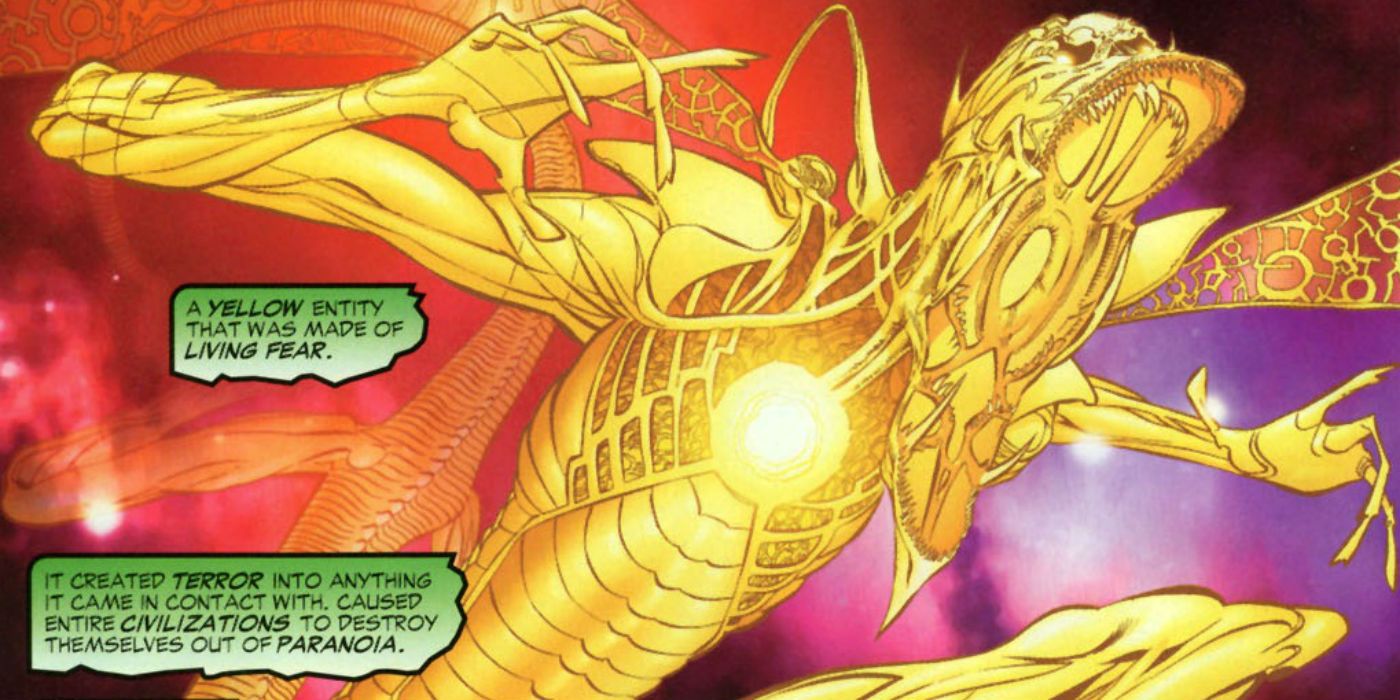When the dying alien Abin Sur gave Hal Jordan his power ring, Hal became the wielder of one of the coolest, most powerful weapons in comics. As long as he charges the ring at his power battery — the green lantern he’s named for — every 24 hours, Hal commands almost unlimited abilities, except against anything colored yellow, that is. In just his debut issue (Showcase #22) Hal was able to fly, lift a mountain, and dematerialize through a wall. What’s not to love about a weapon like that?
Though equally cool, the power ring wasn’t quite as unique as Captain America’s shield or the Infinity Gauntlet. Hal belonged to an entire corps of Green Lanterns, created by the Guardians of the Universe to maintain law and order throughout the cosmos. Every Lantern had a ring as powerful as Hal’s. The Green Lantern Corps has been a source of colorful supporting characters and challenging adventures for decades, and we'll likely be seeing the group grace the big screen once again in the very near future. Read on to find out just how remarkable their rings really are.
Here are 15 Things You Never Knew About Green Lantern's Ring.
15. There’s a prison planet inside Hal Jordan’s ring
Part of the coolness of the Green Lantern Corps is that while Earth's principal GLs — Hal, John Stewart, Kyle Rayner — are star players, the rest of the Corps have amazing adventures of their own. That includes Hal’s predecessor, Abin Sur. In Green Lantern #26, Hal learned that Abin had battled and narrowly defeated the wizard Myrwhydden years earlier. Imprisoning such a powerful mage was impossible until Abin created a world inside the power ring where magic didn’t work. But wouldn’t you know, that prohibition had worn off.
Fortunately, Myrwhydden had no idea the ring had changed hands. His sneak attack from within the ring targeted Abin Sur specifically, so Hal was able to fight it off. Hal then entered the prison world and defeated Myrwhydden (even inside the ring, Hal could still tap the emerald energy). The wizard made several more attempts to escape the ring and eventually succeeded, though he’s yet to win the battle of magic vs. power ring.
14. The power ring has no internal power source
When a Green Lantern charges their ring from the battery, the ring doesn’t store any energy. Instead, it primes the ring to channel power from a giant central battery on Oa, the Guardian’s headquarters. That way, there’s no risk of a GL exhausting a finite energy supply. The only limit on the power Hal and others can draw is the amount of willpower the ringbearer can focus. In a couple of stories (Green Lantern #5, for example), Hal even creates duplicate power rings other people can use to draw power through his battery.
Each ring does contain a small reserve charge, but its only function is to preserve the wearer's life. That reserve saved Hal several times when he'd otherwise have sustained fatal injuries.
As the rings don't store power, the 1990s "Emerald Twilight" plotline (where Hal kills his fellow Green Lanterns to steal their rings) was ridiculous. No matter how many rings Hal wears, he won’t have more willpower, so he’s not going to be able to summon more energy. However, he was pretty much barking mad by this point, so he probably wasn’t thinking straight. And as you can see in the image above, it did make for a pretty spectacular cover image.
13. The ring does much, much more than create big green fists
The rings most visible powers are flight and creating glowing green energy constructs, such as the energy fist Hal has often used to flatten his foes. But that only scratches the surface of what Green Lanterns can do, of course. Marvel’s Cosmic Cube and Infinity Gauntlet have abilities that far outstrip the power ring's, but writers rarely have as much fun with them.
Keep Hal's mask glued to his face even when someone tries to pull it off? Easy.
Change Hal's friend Tom into an exact double of Green Lantern? Doable.
Probe someone’s thoughts or erase an inconvenient memory? Piece of cake.
Turn Hal into an envelope to become bait for a spy? A snap.
Locate a criminal by shining the power ring on his fingerprint card. Why not?
The Green Lanterns' yellow weakness was a great excuse for getting creative with the ring. In one story, Hal goes up against the Shark, a villain with a yellow force field. Hal's solution is to freeze all the water vapor around them into a miniature iceberg, then clonk the Shark hard.
12. The ring has several weaknesses besides yellow
Given the sheer power and versatility of the ring, writers have to work to give Green Lantern a foe who stands a realistic chance of beating him. The yellow weakness helps, but writers have often added extra vulnerabilities to make their life easier and Hal Jordan’s harder.
Mywrhydden’s magic, for example, was able to neutralize ring energy. A cabal of interplanetary criminals found an energy that could penetrate the power rings' defenses in Green Lantern #55. Thraxon the Powerful, a wannabe alien tyrant, built a machine that shut down power rings in #50.
In early Green Lantern stories, writers used the yellow weakness to force Hal to get creative about using the ring. Later Silver Age stories took the power ring's vulnerabilities as an excuse for Hal to use his fists instead. Hal successfully shut down Thraxon's anti-ring technology in #50, but still chose to slug it out with him. If nothing else, it gave artist Gil Kane a chance to draw spectacular scenes of Hal going mano a mano with the bad guys.
11. The ring’s energy source is the collective willpower of the universe
In the Silver Age, the central power battery was fueled by the Guardians themselves, putting some of their immortal life-force into the battery. In the 21st century, GL-writer Geoff Johns introduced a different explanation — the emotional spectrum.
The emotions of living creatures across the universe generate not only the emerald power the Guardians store in the battery, but all the other colors of the rainbow. The colors are linked to emotions such as fear (yellow energy), rage (red) and hope (blue). Green is tied to willpower, which isn’t an emotion, but switching to “courage” would go against decades of Green Lantern continuity.
Each form of emotional energy also comes with an avatar. The green avatar, for instance, is Ion, a being who dwelled in the central power battery for centuries, though it also possessed Green Lantern Kyle Rayner for a while.
Johns’ concept allowed him to create several new corps. Atrocitus, a vengeful survivor of a mass genocide, became leader of the Red Lanterns of rage. Sinestro, a renegade Green Lantern, commands a Sinestro Corps that wields yellow rings of fear. Unlike many major reboots of prominent characters, this one seems to have stuck.
10. The ring has powers even when nobody's wearing it
Green Lanterns can wield their rings even off their fingers. In Green Lantern #18, Hal began testing and training to control his ring from yards away. It’s a useful skill for a superhero: in Justice League of America #96, Hal surrendered the ring to the planet destroyer Starbreaker, then commanded it to punch Starbreaker out.
In Geoff Johns’ version of the Corps, as soon as a Green Lantern dies — and over the course of his run, a lot of Green Lanterns died — their ring flies off to hunt a replacement. The search isn’t left to the rings' own judgment. Mogo, a living planet who’s also a Green Lantern, steers the rings to find the hosts.
Green Lanterns can also preset their rings to act independently. Back when John Stewart was Hal’s designated pinch-hitter rather than a GL in his own right, Hal commanded his ring to fetch John if Hal was incapacitated and couldn't answer a Justice League emergency signal. In Justice League of America #110, Hal knocked himself out cold slipping in the shower, so the ring dragged John into the JLA's next adventure
9. There's a good reason why ring wielders must be honest and fearless
Before Abin Sur passed the ring on, he probed Hal with a power beam to confirm that he met the two requirements for a Green Lantern: honest and “born without fear”. At the time, this didn’t seem terribly important (though later writers struggled with the idea of Hal being fearless), just a fancy way of saying "heroic." It gained more significance in the light of later retcons.
In Justice League of America #141, readers learned that before creating the Corps, the Guardians had built the Manhunter androids to bring order to the universe. With no life experience, the Manhunters became corrupt, and had to be stripped of their power. The Guardians decided that in the future, they'd select their champions from living beings who'd been exposed to the world's temptations and stayed honest.
Part of Geoff Johns’ emotional-spectrum retcon was that the Guardians had imprisoned Parallax, the avatar of fear, inside the central battery. To prevent Parallax from influencing Green Lanterns, the Guardians needed recruits with “the ability to overcome great fear."
8. The ring will allow anyone to use it, even a total stranger
Given the devastating damage a power ring can wreak in the wrong hands, you’d think the Guardians would have built in fail-safes against the wrong hands, but nooooo. In the Silver Age, it seemed anyone with sufficient willpower could command the ring if it fell into their grasp.
Sometimes, that was a good thing. When Hal was mentally incapacitated in Justice League of America #40, Superman takes the ring and uses it to clear Hal’s mind. Most of the time, though, it didn't work out that well. In Green Lantern #18, hobo Bill Baggett stumbles upon the ring while Hal is testing his distance control. When Baggett discovered the ring could grant his wishes if he wished hard enough, he attacked the local town to settle some scores. When Hal went up against Baggett, he had to reclaim control from the ring's new wielder.
Baggett’s one taste of power whetted his appetite for more. He became a minor recurring foe, finding ways to tap into the power ring even when Hal was wearing it. He was neither honest, nor fearless, but it seems the ring didn’t care.
7. Villains have used Hal’s ring to charge their own weapons
The Green Lantern Sinestro of Korugar proved to be just as corruptible as the Manhunters. After he took over his planet, the Guardians stripped him of his ring, but that didn’t even slow him down. Instead, he designed a yellow ring that used energy from the emerald rings as its power source. The thought of turning the Corps’ greatest power against itself undoubtedly amused him; Sinestro’s like that.
Down on Earth, slick criminal William Hand (a character partly based on comics writer Bill Finger) had a similar idea. As Black Hand — the black sheep of the otherwise distinguished Hand family — he discovered how to tap the residual energy Hal's ring left in its wake. He used that to charge his own devices.
Both Sinestro and Black Hand would be retconned in the emotional spectrum era. Sinestro’s yellow ring was now powered by the yellow energy of fear, which fueled the entire Sinestro Corps. Black Hand was changed even more: he became the death-obsessed leader of the Black Lanterns, nihilistic destroyers of all life and emotion. All of this just proved once again that there’s no amusing Silver Age character who can’t be turned into a monster if a writer’s determined enough.
6. Power rings talk
In Green Lantern #10, Hal had to figure out why and how a woman had contacted him through the ring, claiming it was killing her. Hal wondered if the ring's limitless powers included answering questions — and sure enough, they did. Power rings are fully capable of talking to their wielder, or anyone else, though they only spoke when asked for information or conveying a message (and don't worry, once Hal learned the full story, he saved the woman).
Green Lantern's main Silver Age writer, John Broome, got a lot of mileage out of that little detail. When Hal first encountered Myrwhydden, for example, the ring was able to fill in the wizard’s backstory from its memory of fighting him while on Abin’s finger. In another story, Hal's been hypnotized into giving away secrets, then forgetting he did so. The ring updated Hal on the events he couldn't recall.
When Roy Thomas created Marvel's Dr. Spectrum as a Green Lantern pastiche (he eventually became part of Marvel's own Justice League), he endowed Spectrum's "power prism" with a voice too. Unlike the ring, the prism talked constantly, mostly to tell Spectrum he was an idiot for not performing up to the prism's standards.
5. The ring has no fail-safe against Hal activating it accidentally
In the Silver Age, the Guardians were pretty laid back about training their Corps. It’s true that Hal was Abin Sur’s emergency pick, but even after he met the Guardians, they left him on his own to figure out how to use his powers. That included the discovery that the ring could respond to even unconscious thoughts if they were strong enough.
In a flashback sequence in Green Lantern #27, Hal unconsciously wishes bullied, milquetoast Horace Tolliver had the power to turn his life around. The ring takes this as a command, and gives Tolliver the ability to make his wishes come true. In #7, Hal dreams about turning his best friend Tom into a bird, and the ring makes it happen.
It worked out for the best, as Tom saved Hal's life, but you'd think that the Guardians would shield the rings against such accidental directives. Hal did, commanding the ring to only obey intentional orders from that point on.
4. The Guardians did put one fail-safe in the ring (because they were jealous husbands)
The Corps makes an awesome backdrop for Hal Jordan’s adventures — but by the late 1980s, some of DC's editorial team thought of the Corps as a debit, not an asset. Wouldn't Hal be more interesting if he were unique instead of one among many? After all, soldiers and cops aren't unique and nobody wants to read stories about them — oh. Wait.
This led to an awkward retcon that played out over Green Lantern #223 and 224, after the Corps finally executed Sinestro for his many crimes. It turned out that centuries earlier, the Guardians got too busy saving the universe to have sex with their wives. The frustrated female Oans wound up on Korugar, Sinestro’s future homeworld, and spent years having their physical needs satiated by Korugarian men. That worried the Guardians: what if someday they retaliated against Korugar out of jealousy? To prevent that, they installed a fail-safe in the central battery so that if a Green Lantern ever killed a Korugarian, the emerald power would fade away.
By the end of the story, Hal, having beaten the power loss, was now a solo act. Wiser minds would eventually restore the Corps.
3. The ring duplicates the Guardians’ own powers
Before the emotional spectrum days, the source of the central battery’s power was the Guardians themselves. The Guardians are the oldest race in the universe, so evolved that they naturally possess the same powers that the rings give to their wearers. To create the battery, the Guardians placed a portion of their own emerald energy inside it.
In theory, the Guardians could have become superheroes themselves. Not only are they immortal, they'd never have to worry about recharging their power or losing their ring. In practice, recruiting the Corps was smarter. Going up against Thraxon and his ring-neutralizing machines, Hal won because he has muscles, reflexes, and an impressive right hook on his side. The Guardians don’t have any of that; they’re wizened little gnomes who’d fall over in a strong breeze. Where the Green Lanterns act fast and fearlessly, the Guardians prefer to sit around the boardroom and discuss. The Guardians made the right call in staying on Oa and trusting the universe to men and women who were oriented more to action than administration.
2. The Golden Age Green Lantern’s ring works differently from Hal Jordan's
Alan Scott, the original Green Lantern of the 1940s, had a lot in common with Hal. His ring had the same 24-hour time limit, a similar green lantern to charge it, and similar powers, except that his ring's weakness was wood. Alan's ring, however, was magic. No surprise there, as the core concept had been to create a superhero modeled on the legend of Aladdin and his magic lamp.
In All-American Comics #16, a glowing meteor landed in ancient China and declared it would shine three times — once for death, once for life, once for power. A local artisan turned the meteor into a lamp, which carried out the prophecy over the centuries. Alan, of course, was the recipient of the “power” prediction.
Years later, readers learned that when the Oans became the Guardians of the Universe, they'd locked away most of the cosmos' magic to minimize sorcery's disruptive effects. Part of the imprisoned magic had eventually burst free, rocketing to Earth in the form of the magic meteor. The Guardians were indirectly responsible for creating both Green Lanterns.
1. We’ve had three different explanations for the rings’ yellow weakness
Green Lanterns are fearless, so it makes symbolic sense that their one weakness is yellow, the color tied to cowardice. Within the comics, the weakness has been explained three different ways.
First came the Silver Age rationale: the power battery had a necessary impurity which made it impossible to affect anything colored yellow. The impurity was necessary because without it, the battery would be inert and powerless.
1991's Green Lantern #19 told a different story. The yellow weakness wasn't necessary, but the Guardians didn't want Green Lanterns to be omnipotent. Giving them a vulnerability, they believed, would keep the Corps from becoming arrogant. This was one of those unsuccessful retcons nobody ever referred to again.
Later on in the emotional spectrum era, the rings don’t work on yellow because of Parallax being imprisoned in the central battery. When a new Green Lantern triumphed over fear, the yellow weakness vanished. When Kyle Rayner received a ring, it had no yellow weakness because Parallax had left the battery and possessed Hal, the retcon explanation for his madness in "Emerald Twilight."
Given the fact that Green Lantern shows no signs of fading from DC's roster, we may get another explanation a couple of decades from now.
--
What other fun facts do you know about the Emerald Crusader's power ring? Which Green Lantern(s) do you want to see come to the DCEU? Let us know in the comments.

